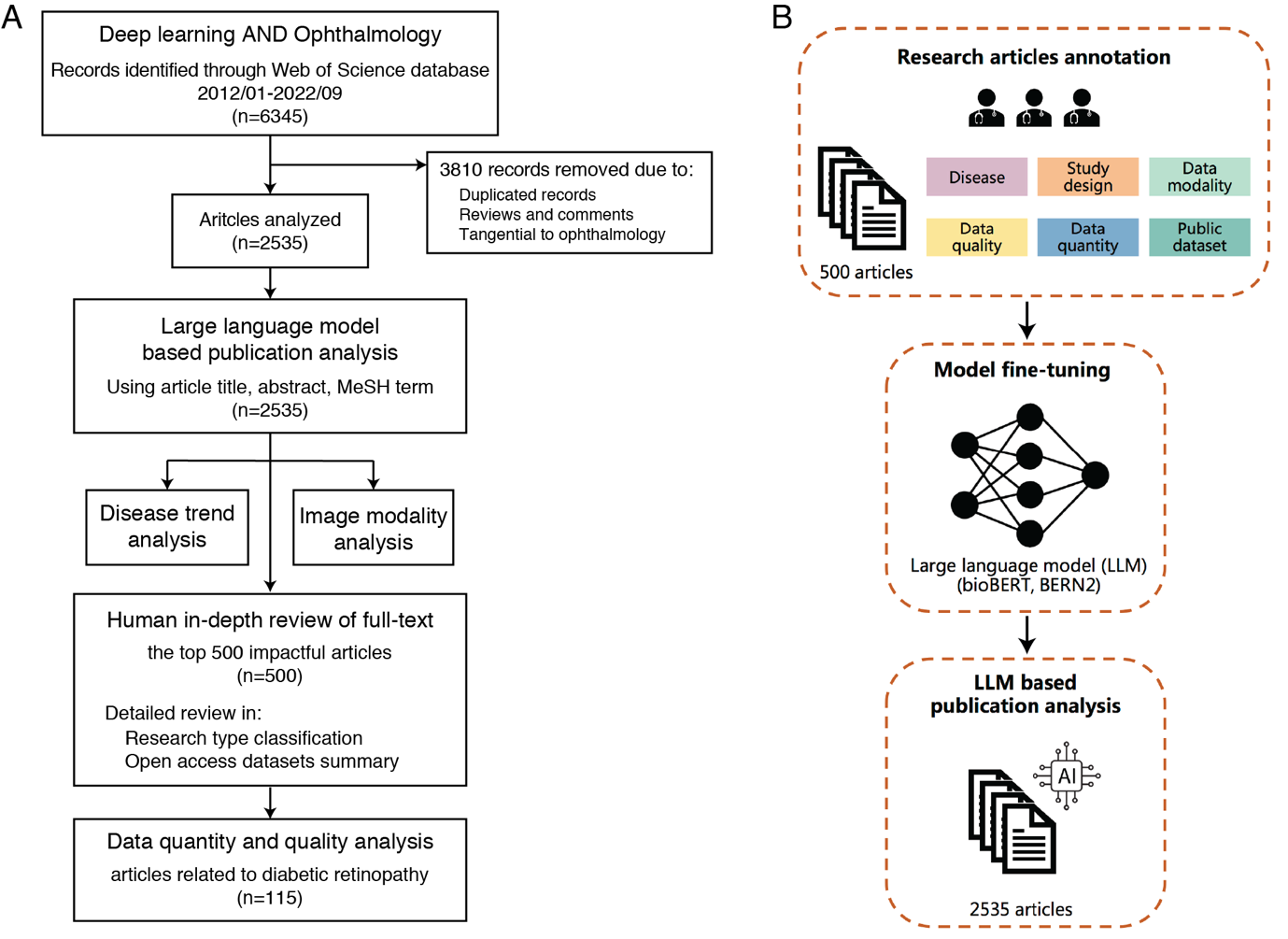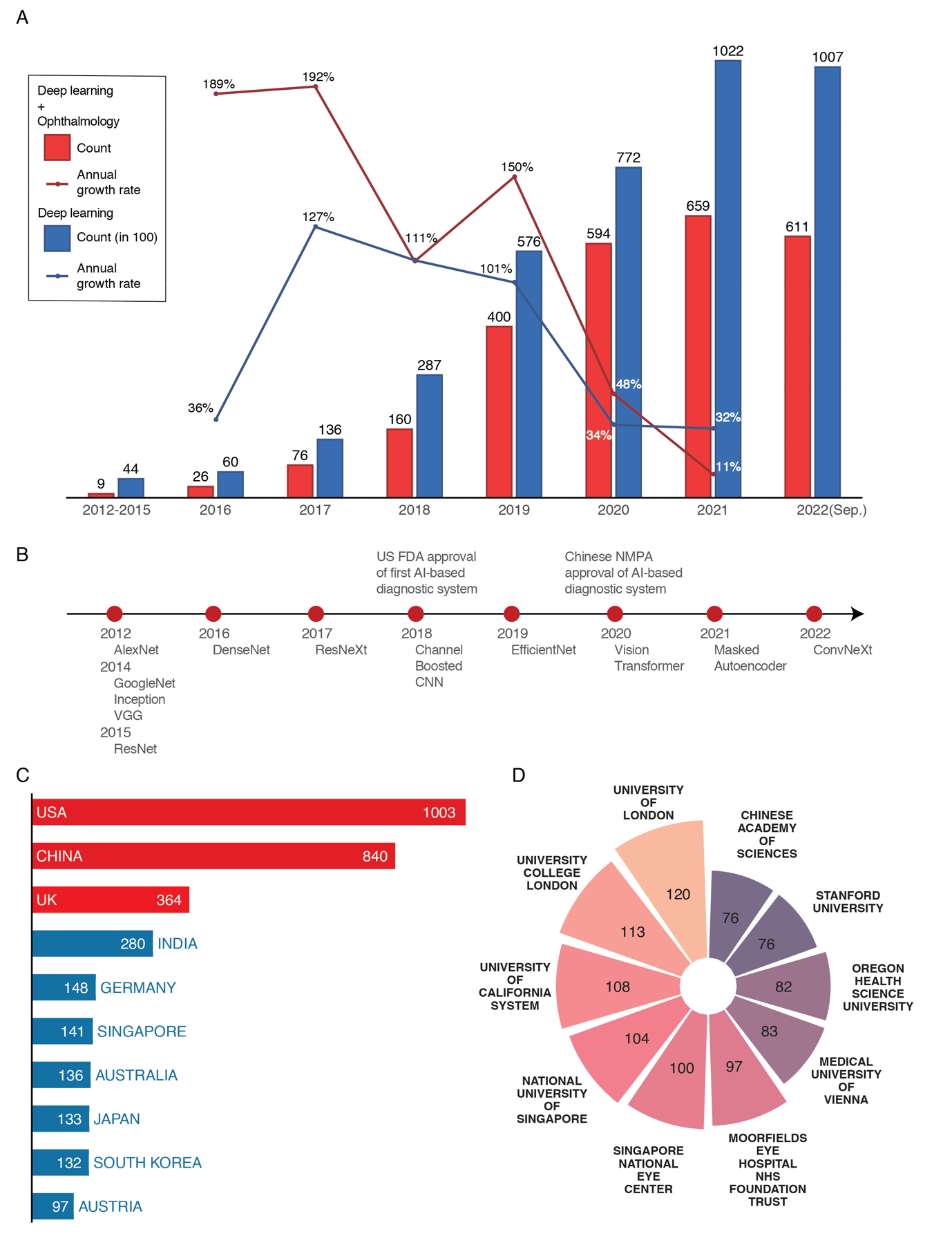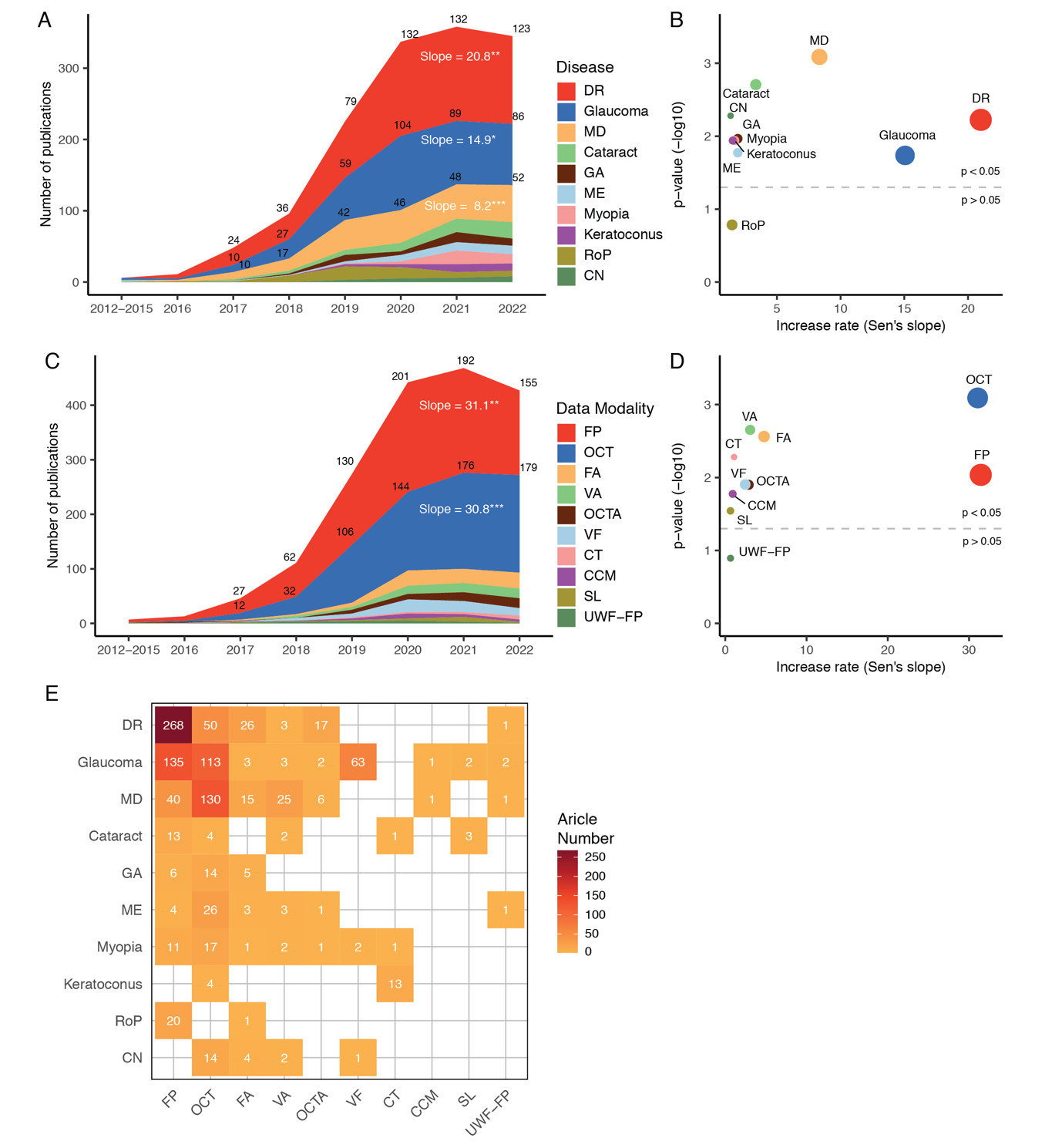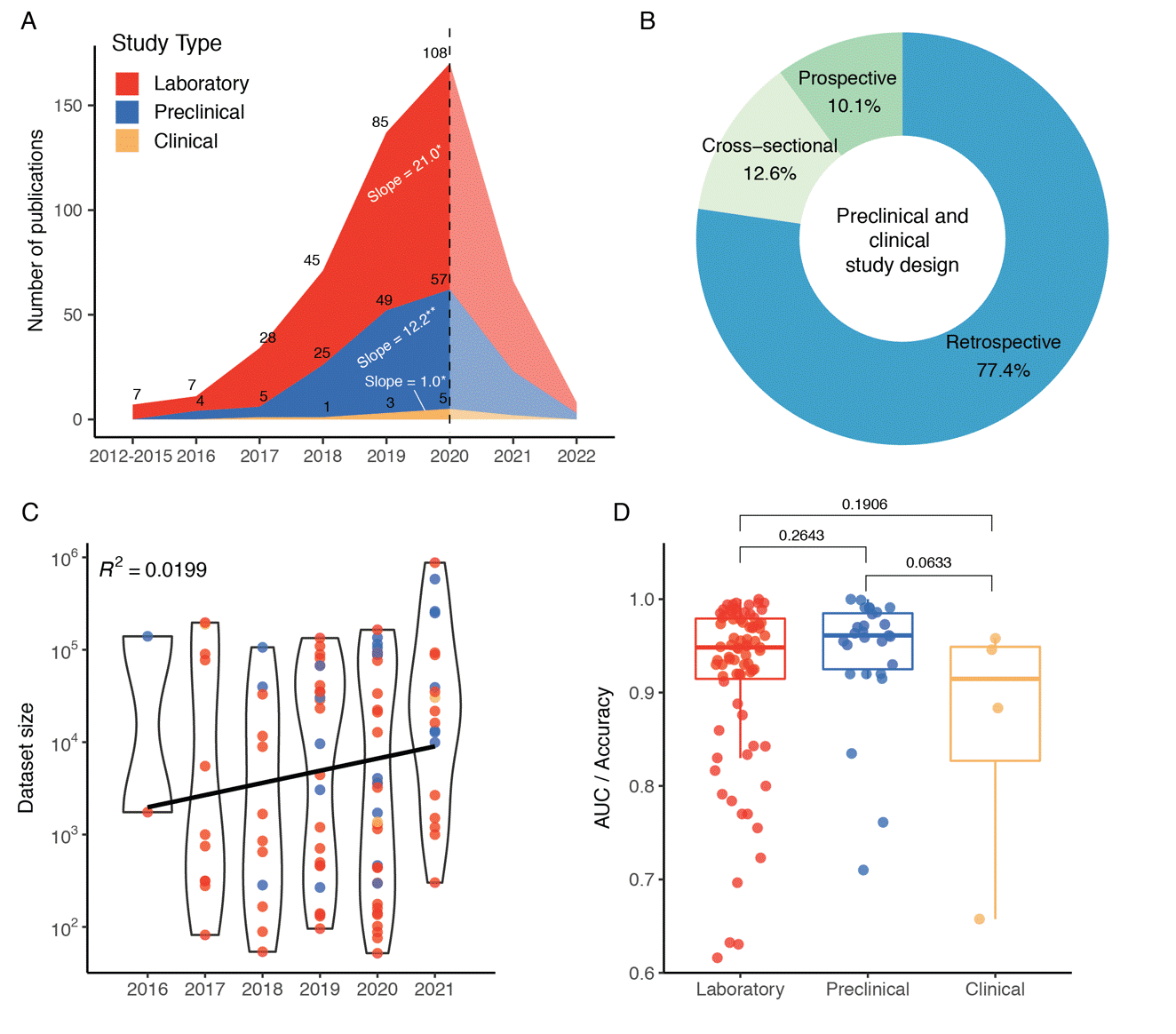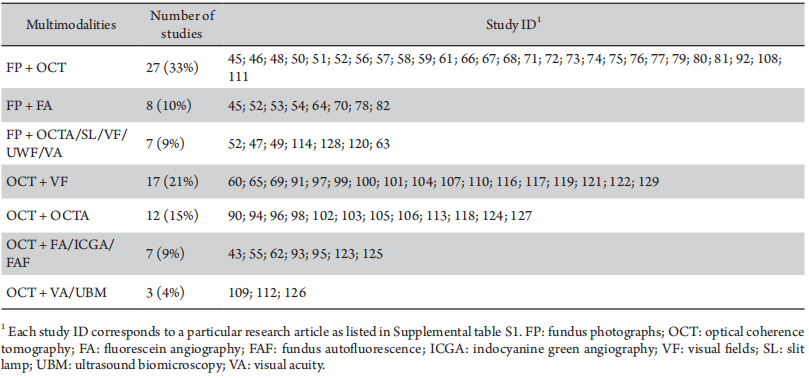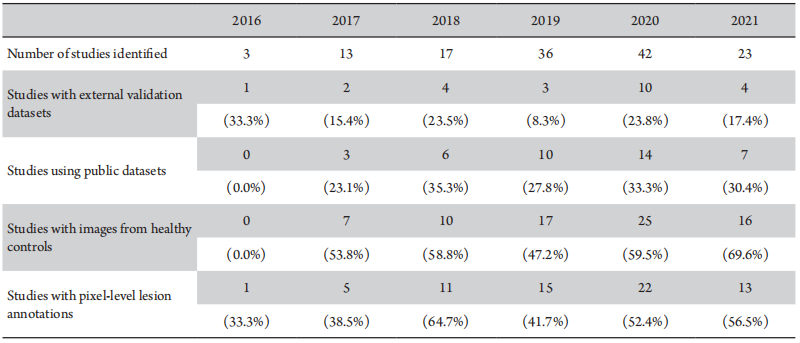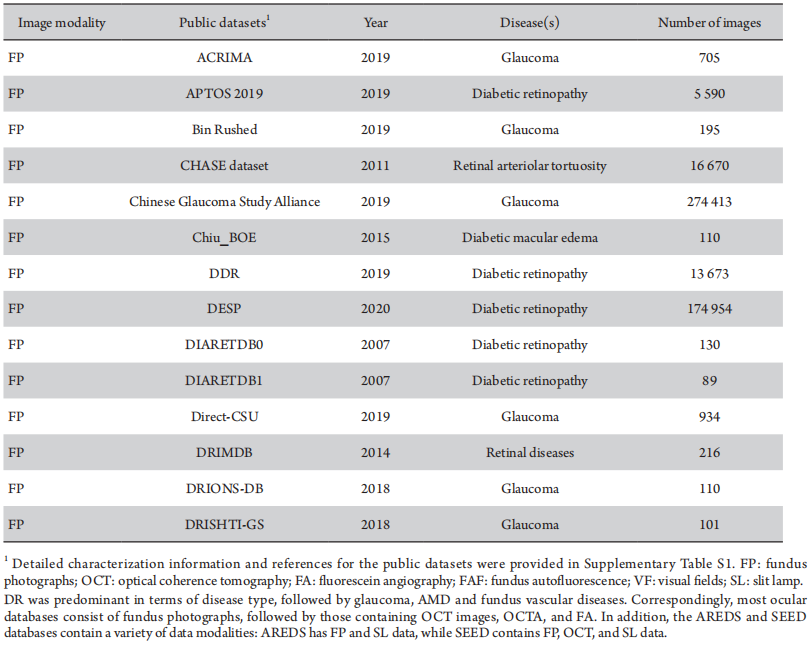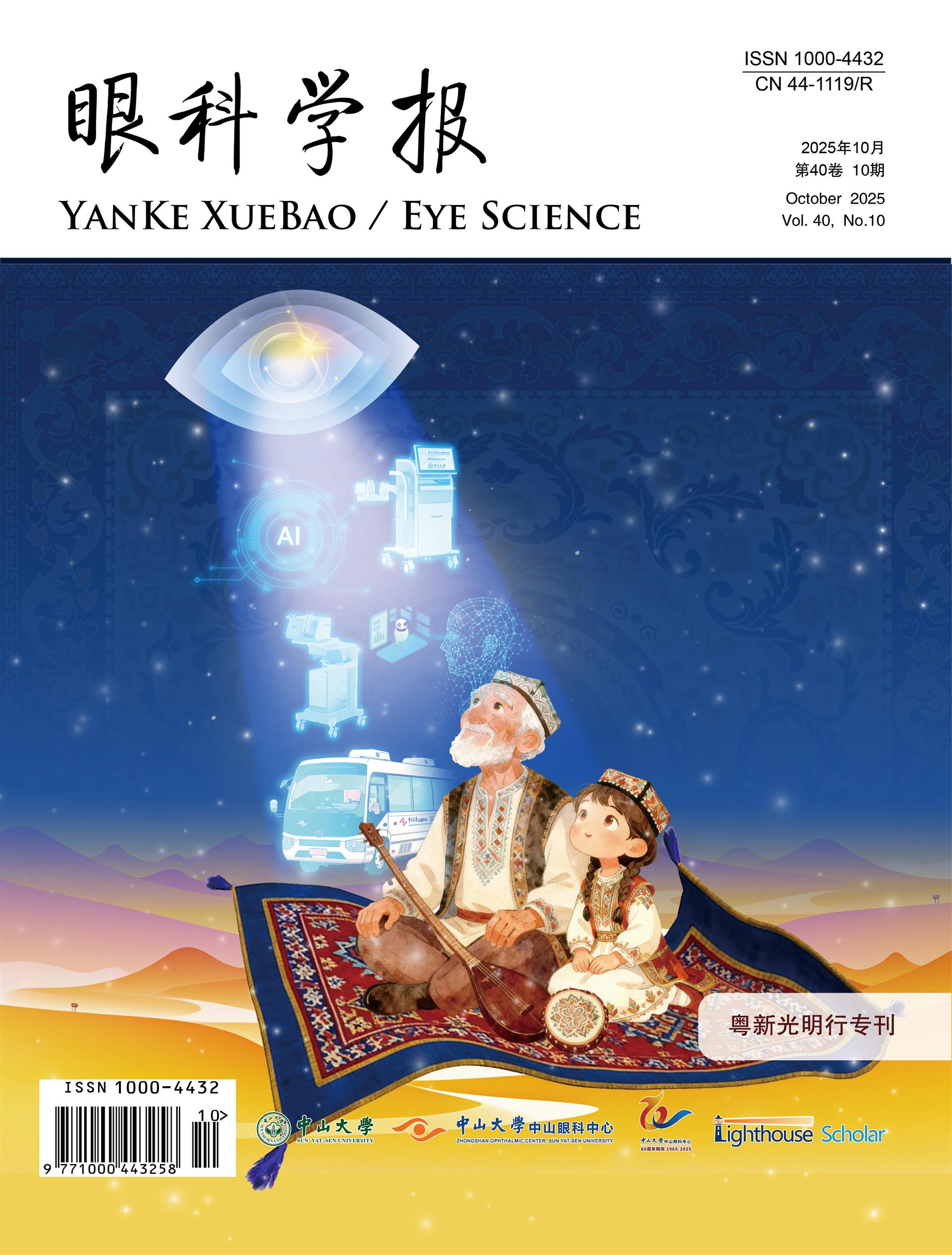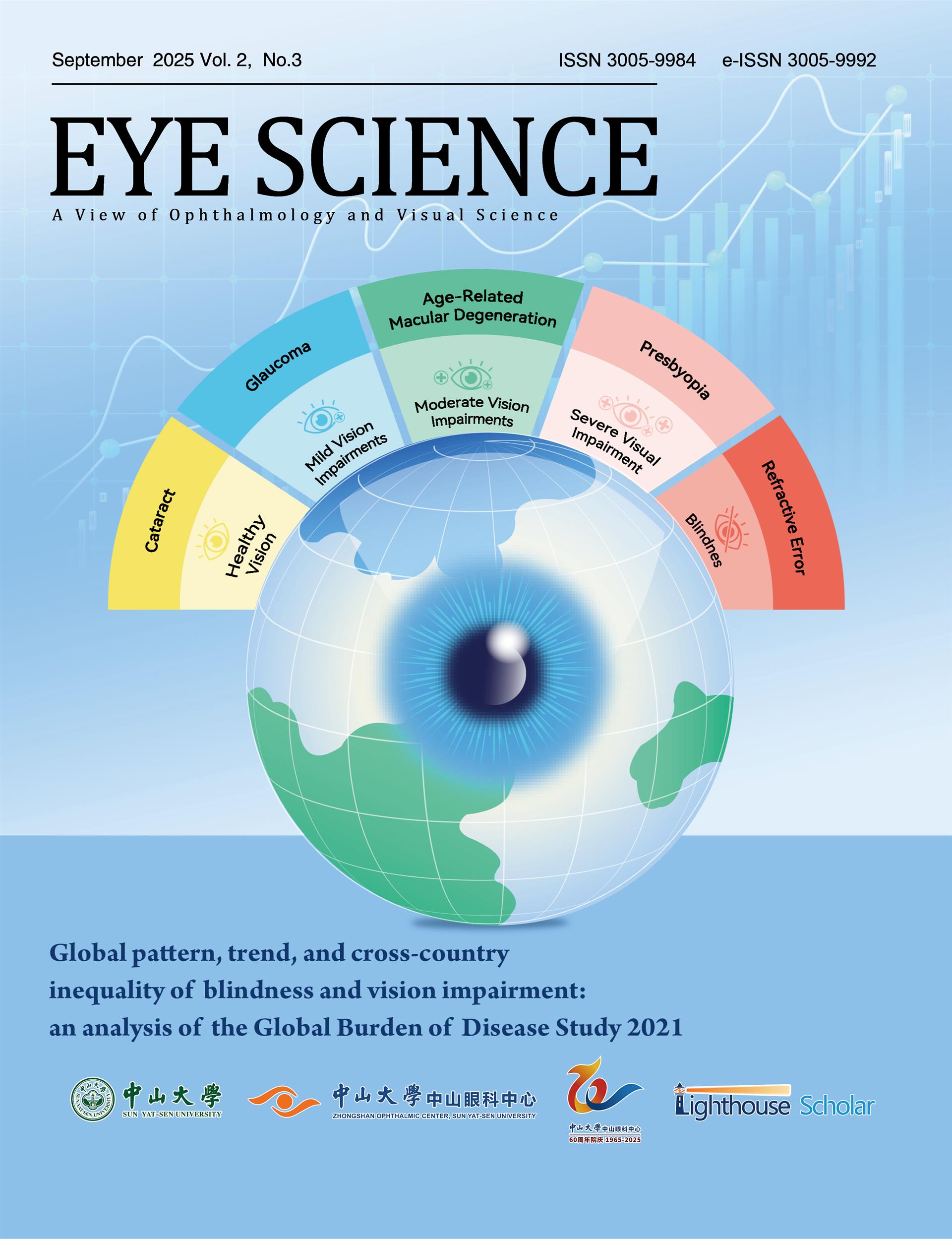1、Ting DSW, Peng L, Varadarajan AV, et al. Deep learning in ophthalmology: The technical and clinical considerations. Progress in Retinal and Eye Research. 2019;72:100759.Ting DSW, Peng L, Varadarajan AV, et al. Deep learning in ophthalmology: The technical and clinical considerations. Progress in Retinal and Eye Research. 2019;72:100759.
2、Ting DSW, Cheung CY-L, Lim G, et al. Development and validation of a deep learning system for diabetic retinopathy and related eye diseases using retinal images from multiethnic populations with diabetes. Jama. 2017;318:2211–2223.Ting DSW, Cheung CY-L, Lim G, et al. Development and validation of a deep learning system for diabetic retinopathy and related eye diseases using retinal images from multiethnic populations with diabetes. Jama. 2017;318:2211–2223.
3、Gulshan V, Peng L, Coram M, et al. Development and Validation of a Deep Learning Algorithm for Detection of Diabetic Retinopathy in Retinal Fundus Photographs. JAMA. 2016;316:2402–2410.Gulshan V, Peng L, Coram M, et al. Development and Validation of a Deep Learning Algorithm for Detection of Diabetic Retinopathy in Retinal Fundus Photographs. JAMA. 2016;316:2402–2410.
4、Long E, Lin H, Liu Z, et al. An artificial intelligence platform for the multihospital collaborative management of congenital cataracts. Nature Biomedical Engineering. 2017;1:0024.Long E, Lin H, Liu Z, et al. An artificial intelligence platform for the multihospital collaborative management of congenital cataracts. Nature Biomedical Engineering. 2017;1:0024.
5、Dong L, He W, Zhang R, et al. Artificial Intelligence for Screening of Multiple Retinal and Optic Nerve Diseases. JAMA Network Open. 2022;5:e229960.Dong L, He W, Zhang R, et al. Artificial Intelligence for Screening of Multiple Retinal and Optic Nerve Diseases. JAMA Network Open. 2022;5:e229960.
6、Sebastian A, Elharrouss O, Al-Maadeed S, Almaadeed N. A Survey on Deep-Learning-Based Diabetic Retinopathy Classification. Diagnostics. 2023;13:345.Sebastian A, Elharrouss O, Al-Maadeed S, Almaadeed N. A Survey on Deep-Learning-Based Diabetic Retinopathy Classification. Diagnostics. 2023;13:345.
7、Yang%20J%2C%20Wu%20S%2C%20Dai%20R%2C%20et%20al.%20Publication%20trends%20of%20artificial%20intelligence%20in%20retina%20in%2010%20years%3A%20Where%20do%20we%20stand%3F%20Frontiers%20in%20Medicine.%202022%3B9.Yang%20J%2C%20Wu%20S%2C%20Dai%20R%2C%20et%20al.%20Publication%20trends%20of%20artificial%20intelligence%20in%20retina%20in%2010%20years%3A%20Where%20do%20we%20stand%3F%20Frontiers%20in%20Medicine.%202022%3B9.
8、Lim WX, Chen Z, Ahmed A. The adoption of deep learning interpretability techniques on diabetic retinopathy analysis: a review. Medical & Biological Engineering & Computing. 2022;60:633–642.Lim WX, Chen Z, Ahmed A. The adoption of deep learning interpretability techniques on diabetic retinopathy analysis: a review. Medical & Biological Engineering & Computing. 2022;60:633–642.
9、Jin K, Ye J. Artificial intelligence and deep learning in ophthalmology: Current status and future perspectives. Advances in Ophthalmology Practice and Research. 2022;2:100078.Jin K, Ye J. Artificial intelligence and deep learning in ophthalmology: Current status and future perspectives. Advances in Ophthalmology Practice and Research. 2022;2:100078.
10、M%C3%BCnchmeyer%20J%2C%20Woollam%20J%2C%20Rietbrock%20A%2C%20et%20al.%20Which%20picker%20fits%20my%20data%3F%20A%20quantitative%20evaluation%20of%20deep%20learning%20based%20seismic%20pickers.%20Journal%20of%20Geophysical%20Research%3A%20Solid%20Earth.%202022%3B127%3Ae2021JB023499.M%C3%BCnchmeyer%20J%2C%20Woollam%20J%2C%20Rietbrock%20A%2C%20et%20al.%20Which%20picker%20fits%20my%20data%3F%20A%20quantitative%20evaluation%20of%20deep%20learning%20based%20seismic%20pickers.%20Journal%20of%20Geophysical%20Research%3A%20Solid%20Earth.%202022%3B127%3Ae2021JB023499.
11、Lee CJ, Sugimoto CR, Zhang G, Cronin B. Bias in peer review. Journal of the American Society for Information Science and Technology. 2013;64:2–17.Lee CJ, Sugimoto CR, Zhang G, Cronin B. Bias in peer review. Journal of the American Society for Information Science and Technology. 2013;64:2–17.
12、Stokel-Walker C, Van Noorden R. What ChatGPT and generative AI mean for science. Nature. 2023;614:214–216.Stokel-Walker C, Van Noorden R. What ChatGPT and generative AI mean for science. Nature. 2023;614:214–216.
13、Sarraju A, Bruemmer D, Van Iterson E, et al. Appropriateness of Cardiovascular Disease Prevention Recommendations Obtained From a Popular Online Chat-Based Artificial Intelligence Model. JAMA. 2023.Sarraju A, Bruemmer D, Van Iterson E, et al. Appropriateness of Cardiovascular Disease Prevention Recommendations Obtained From a Popular Online Chat-Based Artificial Intelligence Model. JAMA. 2023.
14、Lee J, Yoon W, Kim S, et al. BioBERT: a pre-trained biomedical language representation model for biomedical text mining. Bioinformatics. 2020;36:1234–1240.Lee J, Yoon W, Kim S, et al. BioBERT: a pre-trained biomedical language representation model for biomedical text mining. Bioinformatics. 2020;36:1234–1240.
15、Sung M, Jeong M, Choi Y, et al. BERN2: an advanced neural biomedical named entity recognition and normalization tool. Bioinformatics. 2022;38:4837–4839.Sung M, Jeong M, Choi Y, et al. BERN2: an advanced neural biomedical named entity recognition and normalization tool. Bioinformatics. 2022;38:4837–4839.
16、Russakovsky O, Deng J, Su H, et al. Imagenet large scale visual recognition challenge. International journal of computer vision. 2015;115:211–252.Russakovsky O, Deng J, Su H, et al. Imagenet large scale visual recognition challenge. International journal of computer vision. 2015;115:211–252.
17、Lin T-Y, Maire M, Belongie S, et al. Microsoft coco: Common objects in context. In: Computer Vision–ECCV 2014: 13th European Conference, Zurich, Switzerland, September 6-12, 2014, Proceedings, Part V 13. Springer; 2014:740–755.Lin T-Y, Maire M, Belongie S, et al. Microsoft coco: Common objects in context. In: Computer Vision–ECCV 2014: 13th European Conference, Zurich, Switzerland, September 6-12, 2014, Proceedings, Part V 13. Springer; 2014:740–755.
18、Krizhevsky A, Sutskever I, Hinton GE. ImageNet Classification with Deep Convolutional Neural Networks. In: Advances in Neural Information Processing Systems.Vol 25. Curran Associates Inc; 2012. Krizhevsky A, Sutskever I, Hinton GE. ImageNet Classification with Deep Convolutional Neural Networks. In: Advances in Neural Information Processing Systems.Vol 25. Curran Associates Inc; 2012.
19、He K, Zhang X, Ren S, Sun J. Deep residual learning for image recognition. In: Proceedings of the IEEE conference on computer vision and pattern recognition.; 2016:770–778.He K, Zhang X, Ren S, Sun J. Deep residual learning for image recognition. In: Proceedings of the IEEE conference on computer vision and pattern recognition.; 2016:770–778.
20、U.S. Food and Drug Administration (FDA). FDA permits marketing of artificial intelligence-based device to detect certain diabetes-related eye problems. https://www.fda.gov/news-events/press-announcements/fda-permits-marketing-artificial-intelligence-based-device-detect-certain-diabetes-related-eye; 2018 Accessed June 13, 2023.U.S. Food and Drug Administration (FDA). FDA permits marketing of artificial intelligence-based device to detect certain diabetes-related eye problems. https://www.fda.gov/news-events/press-announcements/fda-permits-marketing-artificial-intelligence-based-device-detect-certain-diabetes-related-eye; 2018 Accessed June 13, 2023.
21、National Medical Products Administration (NMPA). Diabetic retinopathy fundus image assisted diagnosis software product approved for marketing. https://www.nmpa.gov.cn/yaowen/ypjgyw/20200810093435157.html; 2020 Accessed June 13, 2023.National Medical Products Administration (NMPA). Diabetic retinopathy fundus image assisted diagnosis software product approved for marketing. https://www.nmpa.gov.cn/yaowen/ypjgyw/20200810093435157.html; 2020 Accessed June 13, 2023.
22、Abràmoff MD, Lavin PT, Birch M, et al. Pivotal trial of an autonomous AI-based diagnostic system for detection of diabetic retinopathy in primary care offices. NPJ digital medicine. 2018;1:39.Abràmoff MD, Lavin PT, Birch M, et al. Pivotal trial of an autonomous AI-based diagnostic system for detection of diabetic retinopathy in primary care offices. NPJ digital medicine. 2018;1:39.
23、Natarajan S, Jain A, Krishnan R, et al. Diagnostic Accuracy of Community-Based Diabetic Retinopathy Screening With an Offline Artificial Intelligence System on a Smartphone. JAMA Ophthalmology. 2019;137:1182–1188.Natarajan S, Jain A, Krishnan R, et al. Diagnostic Accuracy of Community-Based Diabetic Retinopathy Screening With an Offline Artificial Intelligence System on a Smartphone. JAMA Ophthalmology. 2019;137:1182–1188.
24、Lin D, Xiong J, Liu C, et al. Application of Comprehensive Artificial intelligence Retinal Expert (CARE) system: a national real-world evidence study. The Lancet Digital Health. 2021;3:e486–e495.Lin D, Xiong J, Liu C, et al. Application of Comprehensive Artificial intelligence Retinal Expert (CARE) system: a national real-world evidence study. The Lancet Digital Health. 2021;3:e486–e495.
25、Li F, Su Y, Lin F, et al. A deep-learning system predicts glaucoma incidence and progression using retinal photographs. The Journal of Clinical Investigation. 2022;132:e157968.Li F, Su Y, Lin F, et al. A deep-learning system predicts glaucoma incidence and progression using retinal photographs. The Journal of Clinical Investigation. 2022;132:e157968.
26、Yan Q, Weeks DE, Xin H, et al. Deep-learning-based Prediction of Late Age-Related Macular Degeneration Progression. Nature machine intelligence. 2020;2:141–150.Yan Q, Weeks DE, Xin H, et al. Deep-learning-based Prediction of Late Age-Related Macular Degeneration Progression. Nature machine intelligence. 2020;2:141–150.
27、Chen B, Wen M, Shi Y, et al. Towards training reproducible deep learning models. In: Proceedings of the 44th International Conference on Software Engineering.; 2022:2202–2214.
28 Rajput D, Wang W-J, Chen C-C. Evaluation of a decided sample size in machine learning applications. BMC Bioinformatics. 2023;24:48.Chen B, Wen M, Shi Y, et al. Towards training reproducible deep learning models. In: Proceedings of the 44th International Conference on Software Engineering.; 2022:2202–2214.
28 Rajput D, Wang W-J, Chen C-C. Evaluation of a decided sample size in machine learning applications. BMC Bioinformatics. 2023;24:48.
28、Figueroa RL, Zeng-Treitler Q, Kandula S, Ngo LH. Predicting sample size required for classification performance. BMC Medical Informatics and Decision Making. 2012;12:8.Figueroa RL, Zeng-Treitler Q, Kandula S, Ngo LH. Predicting sample size required for classification performance. BMC Medical Informatics and Decision Making. 2012;12:8.




















